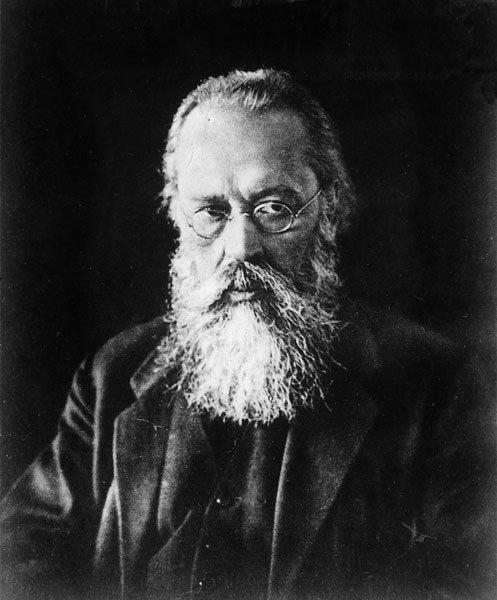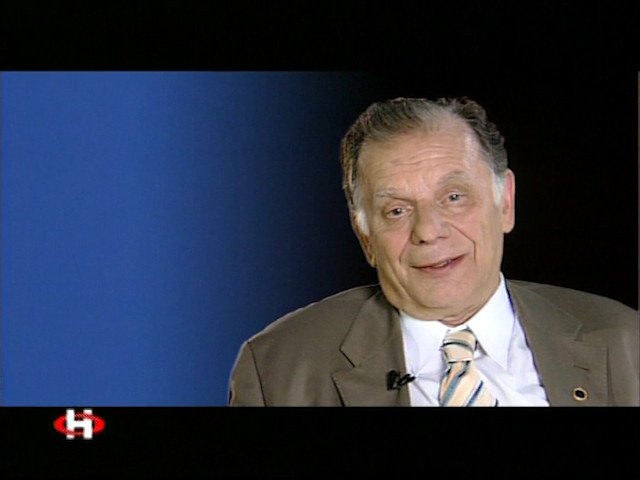Official:
Vladimir Andreyevich Steklov. 28 December 1863 (9 January 1864) – 30 May 1926.
Russian mathematician and mechanic. Full Member of the Saint Petersburg Academy of Sciences, Vice President of the Academy of Sciences of the Soviet Union. Founder and First Director of the Institute of Physics and Mathematics of the Russian Academy of Sciences.
Life and Work:
1. “If I were offered a choice between living for 100 years and doing half of what I did and can do or living for 10 years on condition that I would do everything I am capable of, I would accept the second offer at once,” Vladimir Steklov wrote. The scientist did astonishingly much in science as his legacy accounts for more than 150 works.
2. Vladimir Andreyevich Steklov dedicated all his life to application of mathematical methods to natural science matters. Most of the scientist’s works belong in mathematical physics but among his works are also those devoted to mathematical analysis, specifically the theory of quadrature formulas and the elasticity theory and hydromechanics. Mathematicians know Steklov’s functions and it is virtually impossible to give a full list of the scientist’s research interests where he achieved some prominent results.
3. Vladimir Steklov was born in Nizhny Novgorod into the family of the priest who then became rector of the Nizhny Novgorod seminary. The mother of the distinguished scholar was a sister of Nikolay Dobrolyubov, a renowned literary critic.
4. The father of the future scientist became a priest against his will and did not want his son to choose the ecclesiastical career. The family was open-minded at the time as family members though highly of science and encouraged reading of popular science books. The paternal uncle was an avid mechanic and took interest in electrical machines and developed such fondness in his nephew.
5. From a young age, Steklov was daring and rebellious. When he was a child, Vladimir nearly killed a housemaid with a fire iron over kissing him.
6. Steklov revealed his outstanding physics and mathematics skills at a secondary educational institution – Nizhny Novgorod Institute for Nobles.
7. Steklov got an excellent voice from his father and science almost lost the future luminary as Vladimir Andreyevich who graduated from the institute cum laude thought about an opera career.
8. Vladimir Steklov could not get along with instructors at Moscow University so he had to move to Kharkiv where he joined the faculty of the Institute of Physics and Mathematics. The medical department had no vacancies, otherwise mathematics could again lose a savant.
9. Mathematics and Steklov were lucky as the then Kharkiv University sheltered young Alexander Lyapunov who would eventually grow to become a great scientist. He noticed a capable student and did his best to keep Steklov at the university for professorship.
10. At the Kharkiv University, Steklov gave lectures for nearly two decades. For a living, Vladimir Andreyevich also taught students at the non-classical secondary school and the Institute of Technology. However, he never interrupted his studies.
11. In 1904, Steklov was elected dean of the faculty of mathematics at the Kharkiv University. He could have been elected rector but the scientist refused to take executive position.
12. Steklov’s progressive views and boldness prevented him from staying on the sidelines of protests against injustice. There are stories that he not only fought for the rights of universities but also shamed his colleagues for cowardice and “struthious behavior.” It was only Steklov’s active involvement during the 1905 Russian Revolution that saved students from reprisals.
13. In 1906, Steklov, already a corresponding member of the Saint Petersburg Academy of Sciences, was elected a professor in ordinary of the metropolitan university. In 1912, Steklov became a Full Member of the Academy of Sciences.
14. Steklov greeted the February Revolution but remained an outspoken critic of the Provisional Government. He was not enthusiastic about the Bolsheviks but he showed no intolerance for them either: “They reached out people with Stenka Razin’s age-old slogans but at least they can act and know how to do it.” After the October Revolution, Vladimir Andreyevich turned to saving the academic science and, in 1919, his efforts received an appraisal as he was elected Vice President of the Academy of Sciences.
15. The scientist’s wife developed illness over hunger and cold during the Civil War. Steklov did his best to save her and even took her to Kislovodsk to their relatives but Olga Nikolayevna did not make it and died of pneumonia.
16. Vice President of the Academy of Sciences Steklov handled problems of the Academy until his dying day. It was him who explained the role and importance of the Academy in increasing prestige and cultivating image of the Soviet state to revolutionary leaders. It is through Steklov’s efforts that academic institutes started working as the state purchased foreign devices for them and increased food ration for members of the academy and sent them on foreign trips.
17. The Institute of Physics and Mathematics of the Russian Academy of Sciences was established by member of the academy Steklov just after the Civil War. Vladimir Andreyevich headed it. After his death, the institute was named after him. Later, the institute was divided into the Institute of Physics and the Institute of Mathematics with IMRAS keeping Steklov’s name.
18. “Science is the greatest driver and moral educator of the mankind! It makes humans forget a lot of bad human things, puts humans above the normal, makes them look at all the little things as humans should, having its highness, its charm, and its grandeur remind them of their high human dignity,” Steklov claimed.





















